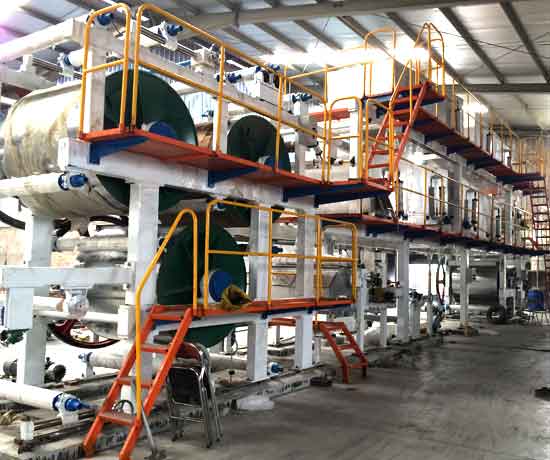Font Size:
Solvent-less silicone oil coating technology is inherently intricate, fraught with numerous technical challenges throughout the process. However, through relentless technical advancements, solvent-less silicone oil coating technology emerges with substantial benefits in health, environmental sustainability, energy efficiency, security, efficacy, and practicality. Consequently, it stands as a pivotal solution to address two paramount issues: energy scarcity and air pollution.
In traditional solvent silicone coating, the prevalent approach involves diluting silicone oil with a greater volume of solvent at lower grammage. This method facilitates precise control over viscosity and release capabilities. However, its notable drawbacks lie in the excessive use of toxic organic solvents, which can contaminate drying apparatus and work environments. Microgravure coaters are widely favored in solvent silicone oil coating due to their simplistic structure and ease of coating weight regulation. Nevertheless, achieving accuracy within 0.1 g/m2 proves challenging, compounded by pre-reactions between silicone oil and solvents in the grooves, necessitating intermittent halts for impurity cleansing.

To surmount these challenges, specialized coating units have been designed, adopting a 5-roller configuration for enhanced coating weight control and continuous production. The structural components include:
Roller A: Coating roller responsible for paper coating.
Roller B: Rubber transfer roll facilitating silicone oil transfer to Roller A.
Roller C: Metering roller.
Roller D: Fixed roller for scraping excess chemicals from Roller C.
The silicone oil is confined between Rollers C and D with flaps on both sides, allowing for precise coating weight control via roller speed adjustments. These functions are seamlessly orchestrated through fully automated computer system control.
In addition to coating units, various ancillary components warrant consideration, including unwinding and rewinding devices, drying systems, and measuring and dispensing systems. The crux of the entire operation lies in coating weight control, coating curing, humidification systems, and feeding devices.
Given the minimal volume of silicone oil coating required, ensuring its uniform distribution onto the substrate surface necessitates heightened accuracy of the coating device. This is achieved through speed differentials between rollers and clearance adjustments between measuring rollers, ensuring the desired coating amount is maintained.
Incorporating a humidification system into the coating line becomes imperative to enhance moisture content, paper flatness, and flexibility. Strategically positioned after the drying apparatus and before the winding device, the humidifier plays a critical role in maintaining optimal paper quality.
Silicone oil feeding typically employs automatic gluing machines, with provisions for air filters to prevent adhesive vapor emissions. Proper design considerations are crucial to ensure consistent silicone oil flow and prevent stagnation, thereby facilitating recirculation. Moreover, foam generation in the coating unit hinges on the linear speed of the roller within the feeding tank.
Whether in terms of environmental stewardship, production safety, product quality enhancement, or cost reduction, adopting solvent-less silicone oil coating confers substantial advantages. It represents a production methodology worthy of vigorous endorsement, underlining its practical value and significance in modern industrial contexts.
At QINGDAO JIERUIXIN MACHINERY AND TECHNOLOGY CO.,LTD, we boast decades of expertise in paper coating machine design and manufacturing. We offer comprehensive solutions tailored to your paper coating needs. Feel free to reach out to us to explore opportunities within the paper coating industry.
What is the thermal paper coating machine line?
2024-04-07Why does the thermal paper coating machine request calender?
2024-04-07Lubricant in paper coating chemicals
2024-04-07SBR latex using in paper coating industry
2024-04-072023 Whiteboard Paper Market Analysis: Fluctuations and Recovery
2024-04-07